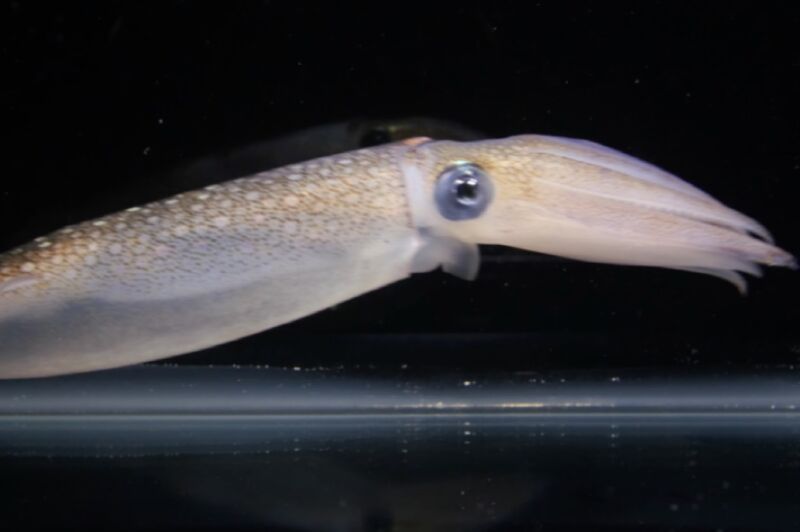Human cells hacked to act like squid skin cells could unlock key to camouflage

Certain cephalopods like cuttlefish, octopuses, and squid have the ability to camouflage themselves by making themselves transparent and/or changing their coloration. Scientists would like to learn more about the precise mechanisms underlying this unique ability, but it’s not possible to culture squid skin cells in the lab. Researchers at the University of California, Irvine, have discovered a viable solution: replicating the properties of squid skin cells in mammalian (human) cells in the lab. They presented their research at a meeting of the American Chemical Society being held this week in Indianapolis.
“In general, there’s two ways you can achieve transparency,” UC Irvine’s Alon Gorodetsky, who has been fascinated by squid camouflage for the last decade or so, said during a media briefing at the ACS meeting. “One way is by reducing how much light is absorbed—pigment-based coloration, typically. Another way is by changing how light is scattered, typically by modifying differences in the refractive index.” The latter is the focus of his lab’s research.
Squid skin is translucent and features an outer layer of pigment cells called chromatophores that control light absorption. Each chromatophore is attached to muscle fibers that line the skin’s surface, and those fibers, in turn, are connected to a nerve fiber. It’s a simple matter to stimulate those nerves with electrical pulses, causing the muscles to contract. And because the muscles pull in different directions, the cell expands, along with the pigmented areas, which changes the color. When the cell shrinks, so do the pigmented areas.

Underneath the chromatophores, there is a separate layer of iridophores. Unlike the chromatophores, the iridophores aren’t pigment-based but are an example of structural color, similar to the crystals in the wings of a butterfly, except a squid’s iridophores are dynamic rather than static. They can be tuned to reflect different wavelengths of light. A 2012 paper suggested that this dynamically tunable structural color of the iridophores is linked to a neurotransmitter called acetylcholine. The two layers work together to generate the unique optical properties of squid skin.
And then there are leucophores, similar to the iridophores except they scatter the full spectrum of light, such that they appear white. They contain reflectin proteins that typically clump together into nanoparticles, so that light scatters instead of being absorbed or directly transmitted. Leucophores are mostly found in cuttlefish and octopuses, but there are some female squid of the genus Sepioteuthis that have leucophores that they can ‘tune” to only scatter certain wavelengths of light. If the cells allow light through with little scattering, they’ll seem more transparent, while the cells become opaque and more apparent by scattering a lot more light. These are the cells that interest Gorodetsky.
https://arstechnica.com/?p=1927218